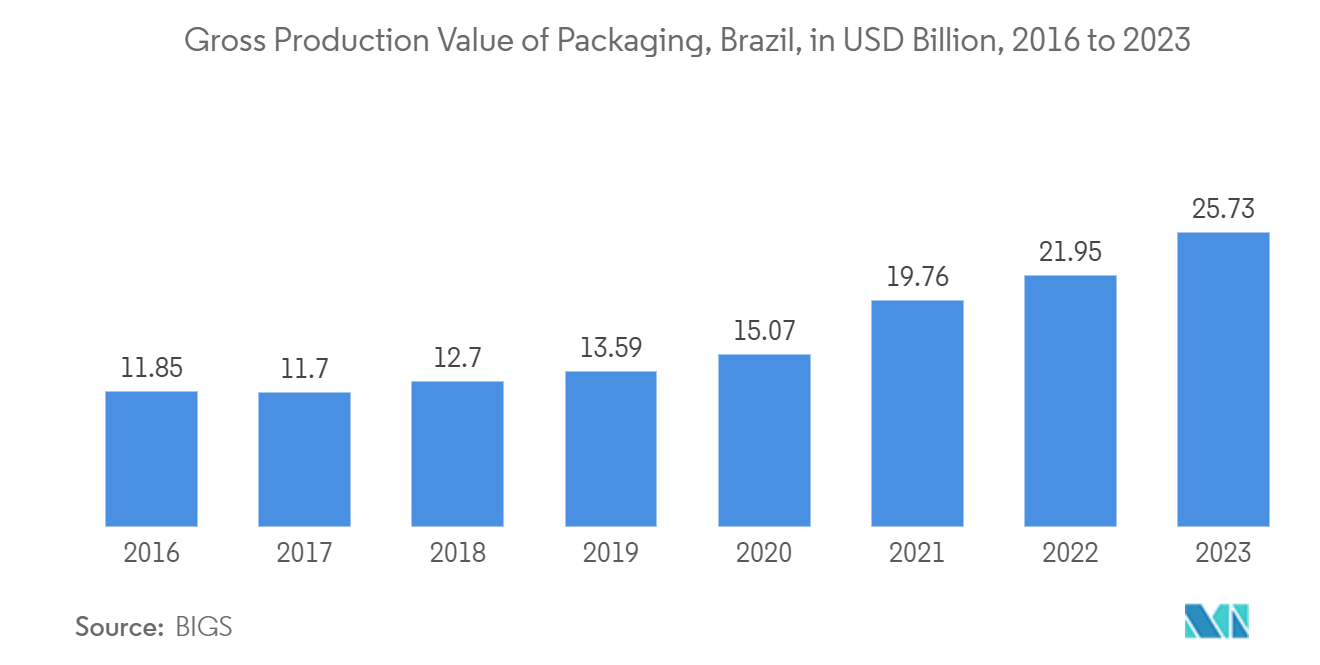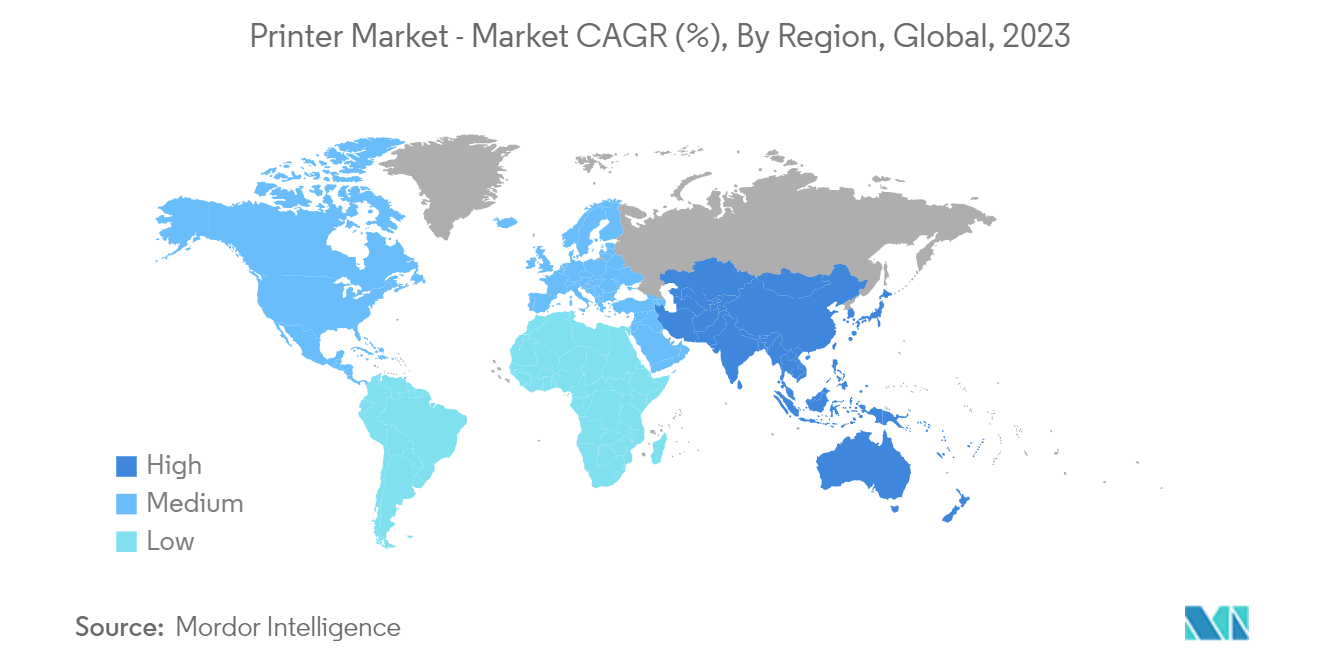Market Trends of Printer Industry
The Inkjet Printer Segment is Expected to Hold Significant Market Share
- Inkjet printing, a method that ejects tiny liquid ink droplets onto various surfaces such as paper, has been instrumental in the advancement of digital printing. This industry is projected to maintain a substantial market share in the foreseeable future due to its efficiency in producing short-runs and personalized items. The growth in e-commerce and the adoption of web-to-print solutions are driving the commercial printing industry forward. Inkjet printers, known for their capability to handle small print jobs and customized products, have solidified their crucial position in this changing environment.
- Despite being a well-established technology, inkjet printing is experiencing a surge in usage due to technological advancements that are redefining the role of print in communication. This shift is driven by factors such as personalization, integration, interactive/mobile capabilities, and the expanding range of print applications. Commercial printing has been a staple since the invention of the printing press. With the proliferation of technology and the increasing adoption of inkjet printing in offices and personal environments, there is a projected global rise in demand for inkjet printheads.
- The increasing popularity of UV-curable inks is a major trend that is propelling the demand for inkjet printers, especially in industries like packaging and graphics. UV-curable inks have the ability to form strong bonds with a wide range of materials, such as plastics, glass, metal, and even non-traditional surfaces like wood and ceramics. This versatility enables printing on various substrates, broadening the potential applications of inkjet printers. These advancements in enhancing the printing capabilities of inkjet printers are expected to further boost the segment's potential in the future.
- The trend toward more sustainable business practices is leading to a preference for digital advertising over print. As companies invest more in digital advertising, the budgets for print advertising, including inkjet printing, are expected to decrease. This shift may result in reduced demand for printed marketing materials such as brochures, posters, and banners. According to the IBEF, digital advertising in India grew at a moderate rate of 8–10% in the fiscal year 2022-23. However, with the expected economic growth in 2023-24, digital ad spending is projected to more than double to USD 21 billion by 2027-28.
- Inkjet printing is playing a crucial role in the packaging industry thanks to its flexibility and ability to customize on demand. This method is particularly effective for variable data printing, making personalized packaging, targeted campaigns, and seasonal designs possible with minimal setup time. Moreover, inkjet printing enables efficient short-run production, cutting down on inventory costs and enabling businesses to print packaging as required. The increasing investments by companies in developing products for printing applications are anticipated to boost the segment's growth.
- In October 2023, Nordmeccanica, a global manufacturer in coating, laminating, and metalizing technology, entered a strategic partnership with Fujifilm for inkjet printing. This collaboration aimed to deliver production benefits for customers of Fujifilm's Jet Press FP790 digital inkjet flexible packaging solution. This agreement with Nordmeccanica follows recent partnerships with Hybrid Software and Henkel Adhesive Technologies, marking another milestone in Fujifilm's strategy to collaborate with top suppliers and technology experts in the flexible packaging industry for its Jet Press FP790.

North America Expected to Register the Largest Market Share
- North America plays a significant role as a major market for printers, given its substantial market size. The extensive use of printers in categories like government, enterprises, homes, offices, and educational institutions has fueled revenue growth in the printer market within the region. Global printing companies, such as HP Inc., Canon, Xerox Corporation, and Seiko Epson Corporation, heavily rely on North America for revenue generation. For instance, in FY 2023, Seiko Epson generated 21.9% of its revenue from the United States.
- Moreover, businesses in the region are looking forward to increased revenue growth by enhancing the software integration and features of multifunction printing devices. The emphasis on reducing environmental impact is spurring innovation among regional suppliers. HP, for instance, has a significant presence in the area, with 33.57% of its revenue in 2023 stemming from printing solutions. HP Inc. has set a target to incorporate 30% post-consumer recycled content plastic in its print and personal systems product range by 2025.
- The number of individuals reading books in the area is on the rise, leading to potential growth in the market. Digital inkjet printing allows publishers to avoid forecasting print quantities, reducing the chances of excess inventory or insufficient supply. This innovation allows for a more adaptive strategy, ensuring that books are produced only when orders are received. It proves to be particularly beneficial for older titles, making it cost-effective to maintain them in circulation indefinitely. As reported by Circana BookScan in May 2024, the printed book market in the United States experienced a 5% growth compared to May 2023.
- The increasing need for eco-friendly packaging options is boosting the expansion of North America's commercial printing industry. Packaging companies are heavily investing in broadening their product offerings within the region. This movement is being driven by a growing consciousness among consumers and regulatory demands to reduce environmental harm. Furthermore, progress in digital printing and the use of environmentally friendly inks are also contributing to market growth, providing cost-efficient and sustainable alternatives to conventional printing techniques.
- Several vendors in North America are driving the advancement of the commercial printing industry by expanding strategically and introducing innovations. Businesses are investing in cutting-edge printing technologies and expanding their production capabilities. As an illustration, in January 2024, Landa Digital Printing, a leading manufacturer of nanographic printing presses, announced the inauguration of its new ink facility in the United States. This strategic move was intended to cater to the growing needs of its expanding customer base in North America. The plant located in the Midwestern United States is expected to manufacture the company's exclusive water-based Landa NanoInk.
- Moreover, advantageous regulations, educational opportunities, training, and campaigns advocated by prominent commercial printing associations, such as PRINTING United Alliance, National Association of Printing Ink Manufacturers (NAPIM), Printing Industries of America (PIA), and National Print Owners Association (NPOA), are positioned to boost demand for commercial printing in the region. These associations offer support, representation, and networking prospects that enhance the capabilities and outreach of commercial printing enterprises, thereby fostering growth and innovation within the industry.


